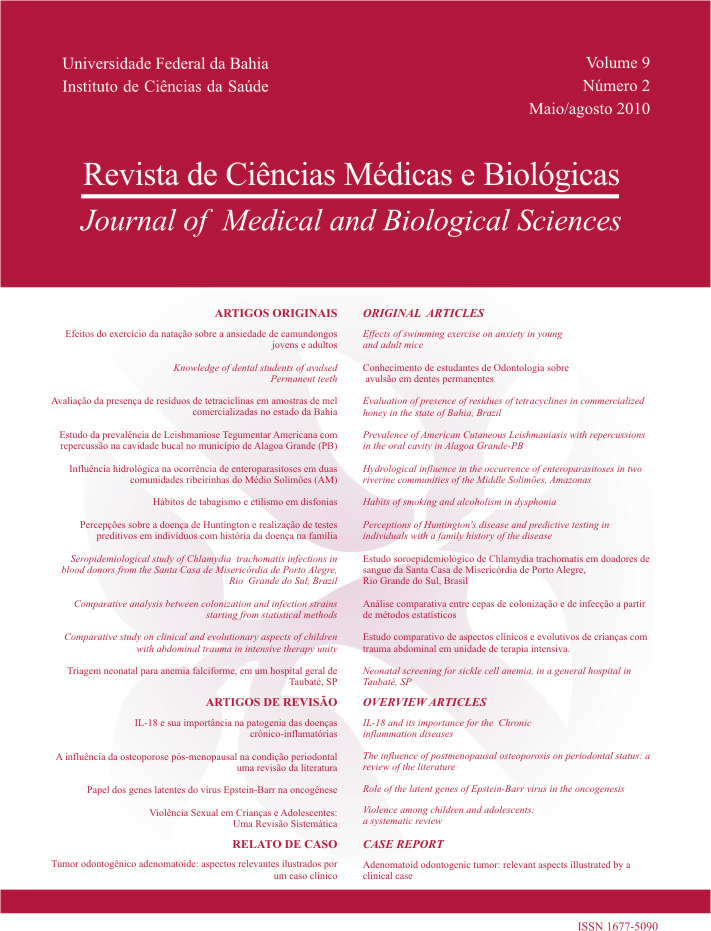Role of the latent genes of Epstein-Barr virus in the oncogenesis
DOI:
https://doi.org/10.9771/cmbio.v9i2.4952Keywords:
Epstein-Barr virus- Latent genes - Oncogenesis.Abstract
Epstein-Barr virus (EBV) is widely distributed around the world, being estimated that more than 90% of the adult population is infected and that the majority transmits intermittently by the saliva. Besides the association with some benign diseases such as infectious mononucleosis, hairy leucoplakia, and post-transplant lymphoproliferative disorder, EBV has also been associated with several tumors such as Burkitt’s lymphoma, Hodgkin’s disease, nasopharyngeal carcinoma, gastric carcinoma and others. In the tumor cells, the referred virus displays a latent status, in which it is able to express some of the thirteen latent genes depending of the tissue and host immunologic status. Despite the wide literature about the latent transcripts, the involved mechanisms are still not completely elucidated. In this scenario, this paper reviews the major data about EBV latent transcripts, pointing the latent patterns observed in the associated tumors, structural features and the reported effects for each transcript, with focus on the oncogenic role.
Downloads
Downloads
Published
How to Cite
Issue
Section
License
The Journal of Medical and Biological Sciences reserves all copyrights of published works, including translations, allowing, however, their subsequent reproduction as transcription, with proper citation of source, through the Creative Commons license. The periodical has free and free access.


